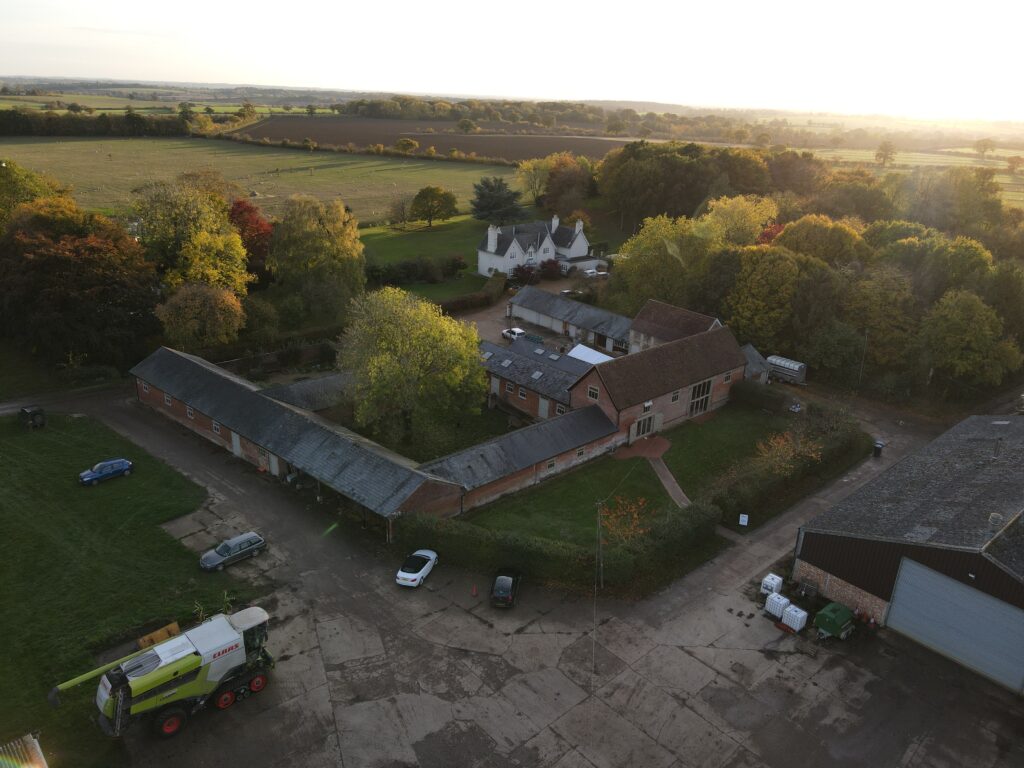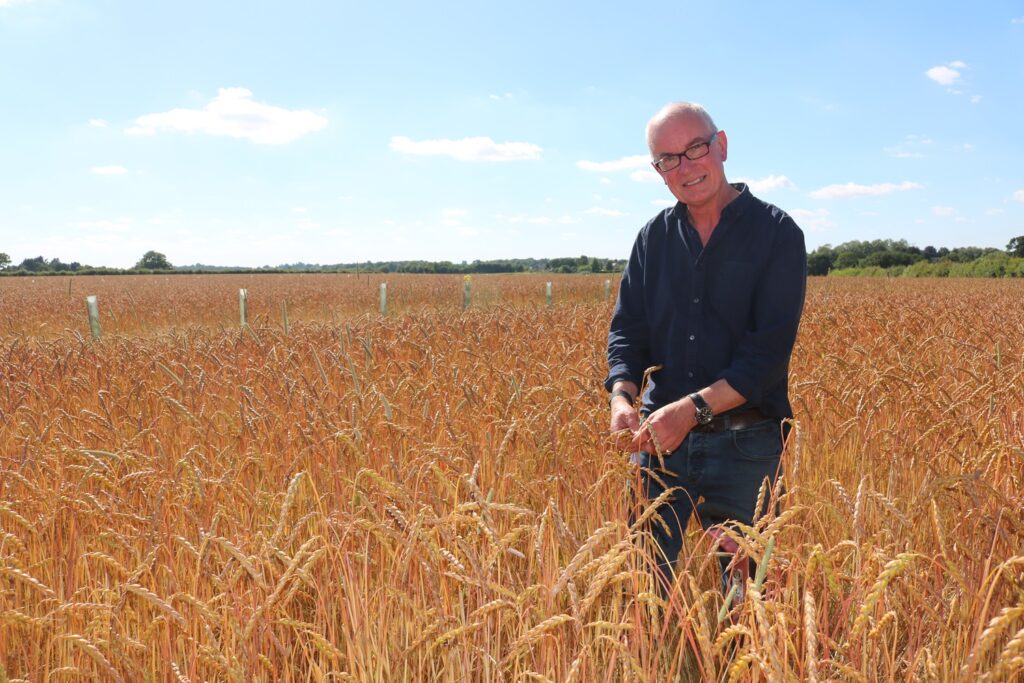Dec 2023
To Certify or Not to Certify, that is the Question
I was fascinated by Helen Browning’s reply to the leading question in a session at this year’s Groundswell entitled, “Is it time to certify regenerative farming?” Given Helen’s position as Chief Executive of the Soil Association and her role as a board member of Soil Association Certification, I was surprised at her answer which was, “No”.
Coming from the Queen of all things organic and me being a loyal subject, I was surprised at her reply given our similar organically certified shackles. To qualify her answer she added that regenerative farmers were still, “Feeling their way”, that they had, “Fire in their bellies” and that certification might “Stifle innovation”.
I brooded on Helen’s leniency.
Organic standards have been preserved in aspic over the time we have been farming under the big ‘O’, so not moving with the times could I suppose lay their rigour bare to the accusation that they do stifle innovation. Over the last few years I have felt that at organic events, my no-pesticide chums have something more akin to a flickering ember in their stomachs rather than a blossoming man’s red flower. Nobody wants to be part of a movement that doesn’t have new thinking at its core, and an excitement for change in the marrow of it’s bones, at least I don’t. I am sure that Helen doesn’t either.
If I had a penny for every farmer who said when contemplating exiting organic farming, “If I stopped organic farming I wouldn’t go back to my old conventional ways, I’d take the best of what I’ve learnt from organics and use it alongside the best of non-organic methods”, I’d have about fifteen pence. But Helen’s take on the excitement at that Groundswell session did get me thinking about the possibility throwing my hat into the ring with part of my own farm to try a bit of organic-lite, or regenerative agriculture. Everyone wants to be in with the in-crowd. I know, I’m so shallow.
There is much debate about what regenerative agriculture actually means and everyone seems to be interpreting it differently, so it is difficult to know how to approach it when thinking about what I might be aiming for. So to help me with the conundrum I consulted the oracle, ChatGPT.

I posed the question, “What are the principles of regenerative agriculture?” I used the word ‘principles’ rather than ‘standards’ as I tried principles first and got the reply, “Regenerative agriculture does not have universally standardised criteria like organic farming”, but we will discuss the pros and cons of ‘standardised criteria’ later.
The generated reply said this, “Regenerative agriculture principles focus on improving soil health, biodiversity, and overall ecosystem resilience. Key principles include minimising soil disturbance, maximising plant diversity, keeping living roots in the soil, integrating livestock, and prioritising organic matter. These practices aim to enhance soil structure, water retention, and nutrient cycling while promoting sustainable and resilient farming systems.”
It all sounded pretty organic. An ‘aim’ sounded workable too. We didn’t quite get there, but we tried kind of thing.
Most of the principles are already fully adopted at Shimpling Park Farm. We have lots of plant diversity with green manures, herbal leys, varietal mixing and multispecies-cropping. There are very few times of the year when there are no living roots in our soil, as in practice we never manage to get rid of 100% of our unintended plants even with cultivations. Post harvest there is always a mat of rare arable weeds (I keep telling myself that they are rare to make me feel better) that always do well in the pre-harvest light of a senescing crop. Sheep were re-installed on the farm in 2014 ticking the livestock box. By default all of the above has resulted in the prioritising of organic matter which has increased on the farm twofold over the last twenty years.
Transitioning from an organic system to my mind would only be enhanced as far as regeneration principles were concerned by less soil disturbance. Having said that, with only appropriate soil movement, I feel that my current system is improving soil health, biodiversity and ecosystem resilience, all three focuses of regenerative principles. My only reason for wanting to move less soil is because of the enormous cost of doing so in terms of power, machinery and labour. It is an ever increasing input.
But I have a dilemma. Less soil disturbance does equal more weeds and not having used any herbicides on the farm since we converted our last field to organic, I couldn’t possibly bring myself to use them again. Killing the diversity that we have built up in our fields in terms of plants (you say weeds), the insects that they host and the food chain they in turn support, is not going to be a thing for me. I especially couldn’t use glyphosate. It is the ultimate weapon if you are wanting to eliminate living roots in the soil. There is nothing regenerative about a systemic weed killer.
So, that sticks me right back into the organic camp, their rigorous standards and having deal with stifled innovation and a dwindling fire.
But do standards stifle innovation? Is my fire really dwindling?
Actually, it’s quite the opposite.
Standards, especially ones governed by a legal framework, force you to innovate. They are the mother of invention.
Saying no to herbicides, wanting to do less cultivations and expecting more weeds (see plants above) has certainly made us innovative. In terms of understanding how crop architecture smothers weeds through crop height, leaf shape/shade, early vigour/even germination and multi-species cropping using a range of heights and shapes. Using longer and highly diverse rotations with a range of inter-seasonal sowing dates. “It’s not the plough, it’s the how” (credit to Tim May #Respect), how low do you need to go? Getting under the skin of weed life cycles, rooting depth and discovering the most appropriate cultivation to deal with the specific issues you’ve got. Appreciating the damage that any intervention does and knowing how to put it right. Experimenting with grazing crops, cover crops and leys. Balancing what’s best for the grazing animal and what’s best for the soil. Discovering and trialling/improving/making novel weeding machines. Dealing with the Home Office to try and get your loyal Polish rogueing team back into the UK post Brexit. The list goes on.
The same complexity applies when dealing with pests, diseases and building fertility. There is no silver bullet.
This is not 365 days a year farming. There’s no ability to switch to a different part of the farm to start all over again because you’ve made some mistakes. The choice is de-certify or do better. To innovate. This is creative stuff. This is systems based farming. Its generational. You have to have fire in your belly to make it work.
I mentioned that organic standards have been preserved in aspic since I’ve been farming. I am not going to pretend that there aren’t areas that I think need looking at, but by not changing standards means that our customers know what they are getting. We are constant. It’s something that they can trust. They know what the deal is.
Going back to ChatGPT I asked what the difference was between a principle and a standard:
“A standard is a specific and detailed criterion or guideline used as a measure or reference. It serves as a basis for evaluating or comparing things. On the other hand, a principle is a fundamental truth or proposition that serves as the foundation for a system of belief or behaviour. Principles are more general and guide the development of standards. In essence, standards are specific rules or norms derived from broader principles.”
Helen Browing might be right at this moment in time but don’t be “Feeling your way” for too long.
It is impossible to compare the outcomes of regenerative principles because everyone is doing something completely different and everyone is calling themselves regenerative, and it’s a problem. It’s a problem for you, because it will associate you with someone less signed up to the cause and it’s a problem for your customer because there will be no certainty in what your product promises. They certainly won’t pay you any more money unless it you can independently prove it is what you say it is. You might be able to sell yourself as an individual but not as a collective movement.
You have to be able to evaluate the benefits of your system and communicate those benefits to your customer, and you can only do that with certification based on trusted developed standards which mean something. If you can’t do that, your customer will loose trust, and then you don’t have a business, you’ve got a hobby.


